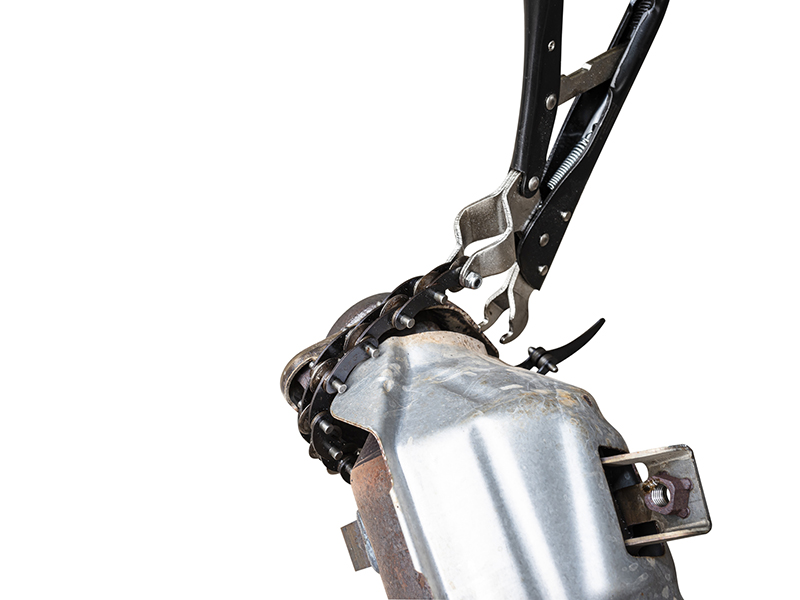A catalytic converter is a device found in vehicles’ exhaust systems that converts environmentally hazardous exhaust into less harmful gasses. Although catalytic converters have been installed in every new vehicle since 1975, theft of these devices has skyrocketed in recent years due to the highly valuable precious metals they contain. With catalytic converter theft on the rise, it’s important that you understand how to protect yourself.
Why Catalytic Converters Get Stolen
The National Insurance Crime Bureau (NICB) found that the number of reported catalytic converter thefts increased from roughly 1,300 in 2018 to more than 52,000 in 2021. Several reasons thieves target these devices include:
- They’re easy to steal. It only takes a few minutes to steal a catalytic converter using a saw or wrench, and most vehicles don’t need to be jacked up for thieves to access the device. Taller cars may be targeted more frequently since they’re easier for thieves to get underneath.
- They’re highly valuable. In recent years, the rare earth metals— such as platinum, palladium and rhodium—used to manufacture these devices have greatly increased in value. In 2021, platinum sold for $1,100 per ounce, palladium for $2,400 and rhodium for $18,000.
- Catalytic converters are not made equally. Hybrid cars, for example, are highly targeted since their catalytic converters contain more precious metals.
- They’re hard to trace. Catalytic converters don’t carry an identification number, so it’s nearly impossible to identify them as stolen property.
How to Prevent Catalytic Converter Theft
Some states, such as Indiana and Texas, have passed laws to help reduce the frequency of catalytic converter theft. These include requiring scrap metal dealers to ask for vehicle titles or other documentation before buying used devices. However, since replacing a stolen catalytic converter can cost upwards of $1,500, it’s still important for vehicle owners to take preventive action to reduce the possibility of theft. The following are ways to minimize catalytic converter theft:
- Install an anti-theft device. Many manufacturers have developed anti-theft devices, such as steel plates that protect the underside of a vehicle or steel cable cages that make removal more difficult. Installing an alarm or a bright motion sensor light can also deter a thief.
- Park in secure areas. If available, vehicles should be parked overnight in a locked garage or in a well-lit, enclosed lot. When parking on the street, pick a well-lit area with plenty of traffic.
- Paint the catalytic converter. Using a high-temperature, fluorescent automotive exhaust spray paint on the auto part can create a visible deterrent to alert thieves to move on. Paint can also signal law enforcement and recyclers to look for etched numbers or identification marks.
- Get the device etched. Some police departments and muffler shops will etch a vehicle’s identification number or license plate number onto the catalytic converter for free, making it harder for thieves to sell the part. Vehicle owners can also purchase an engraver’s machine for a minimal cost at a hardware/do-it-yourself store.
- Purchase comprehensive auto insurance coverage. While having coverage in place won’t prevent catalytic converter theft, it will help cover expenses if the part gets stolen. Keep in mind that purchasing only auto liability coverage will not cover theft.
Conclusion
Even with the proper insurance coverage, victims of catalytic converter theft may still have to wait for repairs due to parts delivery delays and repair shop backups. With such thefts on the rise, taking preventive action is the best way to avoid becoming a target. Contact us today to review your auto insurance policy and make sure you have the proper coverage.

